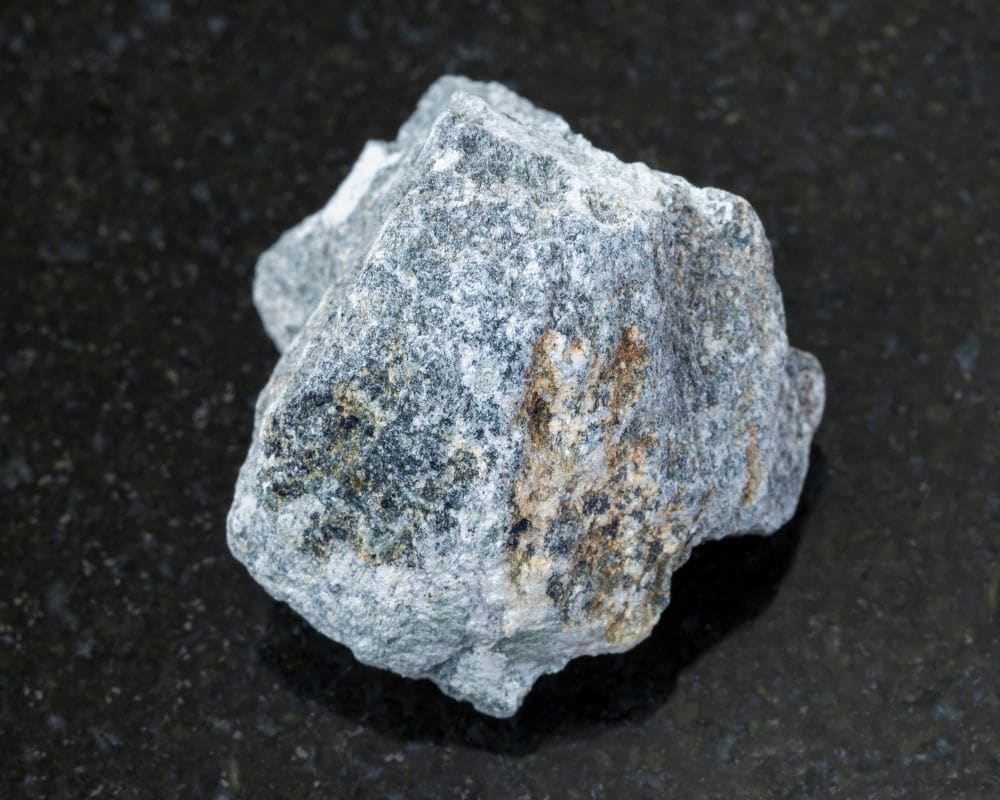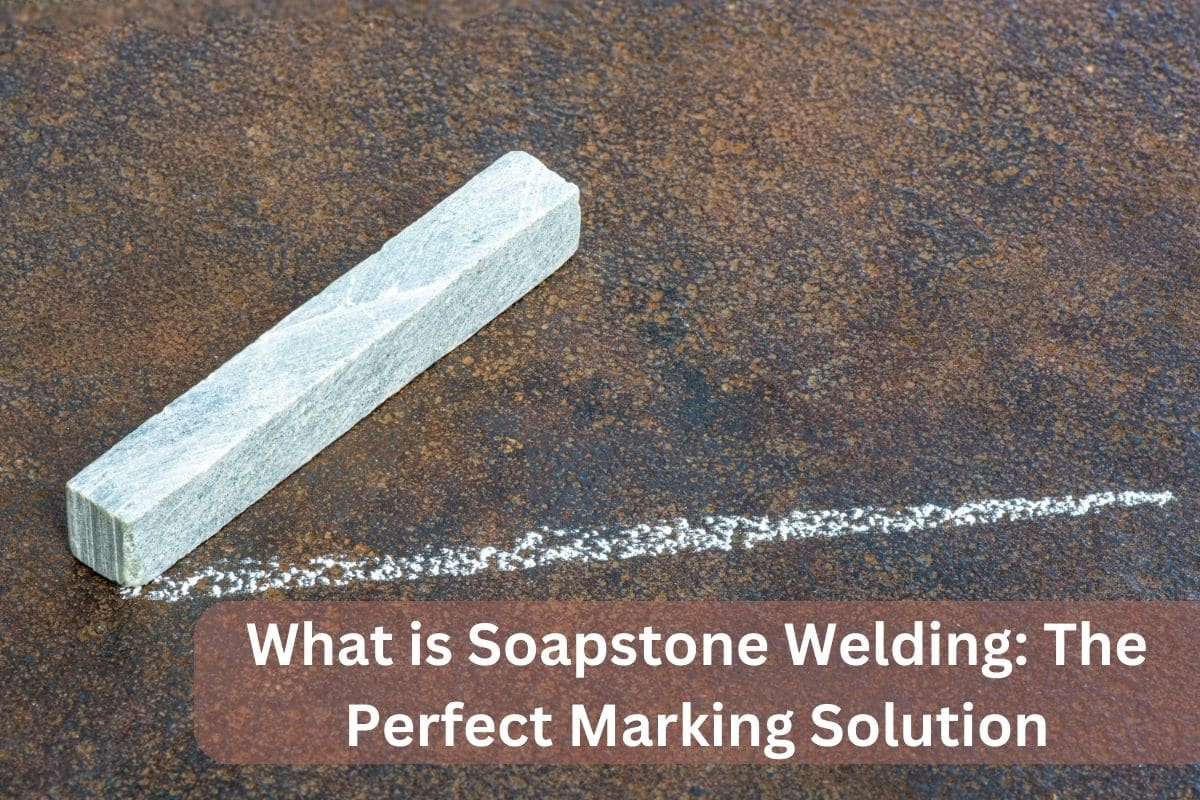Soapstone welding is more than just a neat trick in the fabrication industry; it’s an essential tool.
This rock not only serves as a reliable labeling tool for flammable materials but also ensures that the quality of your welds remains uncompromised.
In this article, we’ll break down what soapstone is, its unique features, and why it’s the go-to choice for professionals.
What Exactly is Soapstone?

Soapstone is a unique sedimentary rock primarily composed of talc, lending it a soft texture. Yet, its softness shouldn’t be mistaken for weakness.
It also contains a mix of other minerals like carbonates, micas, chlorite, amphiboles, and pyroxenes that contribute to its heat-resistant qualities.
Because of this unique blend, soapstone offers the best of both worlds: it’s soft enough to leave marks yet heat-resistant enough to withstand high-temperature activities, like welding.
It’s this particular combination that sets soapstone apart from other materials.
Read Also : What is DCEP Welding? Excellent DCEN Comparison
How Does Soapstone Form and What’s in It?
The formation of soapstone occurs in specific geological settings—particularly at the edges of tectonic plates where heat and force are prominent.
Over time, a process known as ‘metasomatism’ gives rise to this unique rock.
For welders and fabricators, it’s the softness and heat resistance that matter most. Being able to make precise markings while not worrying about the marks burning away under high heat is a significant advantage.
In essence, soapstone welding is tailor-made for activities requiring both detail and durability.
What are the Uses of Soapstone Welding?
You might think that soapstone is only relevant to welders, but that’s far from the truth. It boasts a broad spectrum of uses:
- Cold stones to chill your beverages without diluting them
- Kitchen countertops that resist both heat and stains
- Metal casting molds designed for detailed, high-heat scenarios
- Sinks in both kitchens and bathrooms due to its non-porous nature
- Pencil markers for labeling or drawing on various surfaces
- Decorative sculptures that highlight its soft, carveable texture
These diverse uses aren’t just a coincidence; they’re a direct result of soapstone’s unique physical and chemical properties.
What Makes Soapstone Unique?
So, what are these unique characteristics that make soapstone so versatile, particularly in soapstone welding?
- Acid- and alkali-resistance makes it durable in corrosive environments
- Smooth texture allows for intricate carving and detailing
- High specific heat potential means it retains temperature well, be it hot or cold
- Being non-porous makes it hygienic and easy to clean
- Its poor electrical conductivity ensures safety in electrical applications
All these qualities form a strong case for using soapstone in various fields, especially in welding.
How is Soapstone Used in Welding?
Material Handling
In the first phase, material handling, you’ll often find markings on your raw materials. These markings can come in various forms—paint pens, tags, and of course, soapstone.
But soapstone welding has the edge because it’s compatible with project drawings and cut lists.
You can directly correlate the markings with the project plans, simplifying the setup process for your welding activities.
Fit-Up
The fit-up phase is where the rubber meets the road, so to speak. Here, the fitter uses soapstone welding to translate the project drawings onto the actual materials.
These marks guide the fabrication process, and the beauty of using soapstone welding is that you can file down the markings for ultra-precise guidance.
This precision reduces error and enhances the efficiency of your work.
Welding Identification
Every company likely has a system to identify who completed each weld. With soapstone welding, welders can leave their unique IDs next to each weld.
The heat-resistant markings remain intact throughout the entire process, even under extreme temperatures. It serves as an enduring record, which is useful for quality control and accountability.
Flame Straightening
Distortions are almost inevitable in any welding project. That’s where flame straightening comes in. Using an oxyfuel torch, you can counteract stress and distortions in the material.
During this process, soapstone marks prove to be invaluable. They don’t burn away or degrade, allowing for ongoing, accurate reference points as you straighten the material.
Why Choose Soapstone? Erasability and Affordability
Soapstone is not just versatile and durable; it’s also forgiving. Unlike other materials that may leave permanent marks, soapstone can be easily erased.
This means you can maintain the aesthetic quality of your end product without too much fuss. And if you’re concerned about cost, soapstone is incredibly budget-friendly.
Its abundant supply allows for discounted rates, especially for bulk purchases. This makes it an economical choice without compromising on the quality of your work.
Does Soapstone Affect Weld Quality?
An understandable concern for any welder is whether the markings could potentially contaminate or weaken the weld.
Thankfully, soapstone is non-metallic and non-contaminating. It won’t interfere with the quality of your welds, and its markings don’t degrade under high heat.
So, you can proceed with your welding tasks, confident that soapstone will not compromise the integrity of your work.
Read Also : What is DCEN Welding: Excellent Reasons to Choose
Conclusion
Soapstone welding stands out as an indispensable asset in the welding and fabrication sector. It’s heat-resistant, easy to erase, and doesn’t interfere with the quality of your welds.
If you’re looking to improve your welding skills or just starting out, soapstone is one tool you’ll find indispensable.


